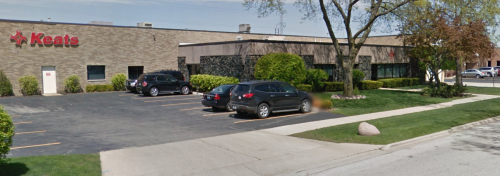U.S. manufacturing growth accelerated for a third straight month, according to an industry report at the beginning of May. As seen in The Institute for Supply Management (ISM), national factory activity rose in April, continuing upward from March—which shows every indication of a continuing trend.
There’s a glitch in this economic scenario, though. Today’s manufacturing workforce is mostly age 45 and older. Baby Boomers are retiring, and it seems as though many young people have negative perceptions about manufacturing jobs, despite all kinds of reliable information showing a future of an increasingly technology-based economy.
It is fairly clear that manufacturing is where the jobs will be in the future. Technical fields are expanding ahead of others. On top of this it the U.S. Bureau of Labor and Statistics estimates that by 2018, 1 in 20 jobs—an estimated 2.8 million jobs—will require secondary degrees; over two-thirds will require a bachelor’s degree.
 The first place to start engaging future employees is with programs in junior/senior high schools, getting students excited about STEM subjects. STEM education includes every field under the umbrella of Science, Technology, Engineering and Math—everything from chemistry to physics, software design to trigonometry. Many manufacturers, including Keats, have developed partnerships with schools to encourage them to offer more skills training and to increase emphasis on STEM programs.
The first place to start engaging future employees is with programs in junior/senior high schools, getting students excited about STEM subjects. STEM education includes every field under the umbrella of Science, Technology, Engineering and Math—everything from chemistry to physics, software design to trigonometry. Many manufacturers, including Keats, have developed partnerships with schools to encourage them to offer more skills training and to increase emphasis on STEM programs.
Getting students into our plant to take a good look around is one way to increase awareness and generate interest. Recently, the TMA (Tooling & Manufacturing Assoc.) brought a youth tour group through our facility. It was a fantastic way to expose kids to the great career opportunities in manufacturing. Not long ago, another group engineering students from Tenor High School PLTW (from Milwaukee, WI) also visited Keats for a tour.
An additional initiative Keats is involved with is a group called the Joint Policy Board for Mathematics. Its role is to boost awareness among young people of the importance of STEM training. The Board provided students with special lectures, events, contests, and educational outings.
Right here in our plant at Keats, we held an eight-week basic metalworking skills class in partnership with the Jane Addams Resource Corp (JARC). The class was for our new employees to gain competency in basic metalworking.
You may recall that about a year ago, we blogged about our paid internship program, which is yet another way of giving younger workers the readiness they need to be competitive in manufacturing. It has been extremely beneficial in helping us find the next generation of proficient workers. In fact, last year Keats hired and retained 15 new staff (average age 25), bringing the total number of its employees to 106.
For Keats, as well as the entire manufacturing sector, to benefit and succeed in this era of technology innovation, those of us who love the industry must continue to share their passion with the next generation. It benefits each and every one of us in the end.

